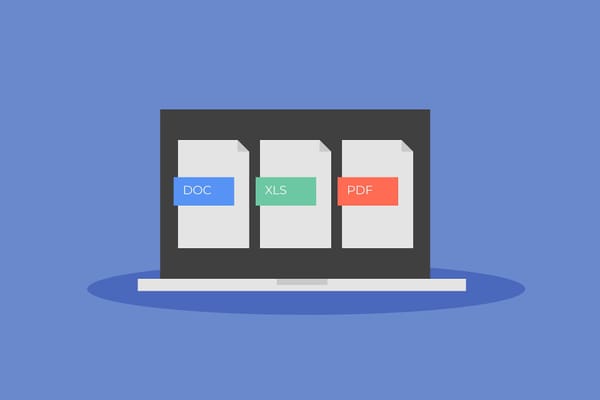Guardians of Patient Data: A Cybersecurity Checklist for Small Healthcare Providers

Advancing technology has paved the way for our interconnected world. The internet binds most devices, unlocking a whole new world in terms of accessibility and convenience, but also one where digital threats lurk at every step.
Healthcare providers are among the most vulnerable entities in the face of cyber intrusions, mainly due to their handling of sensitive data.
From sprawling hospital networks to local clinics, healthcare organizations of all sizes face the same cybersecurity responsibilities and challenges. While small healthcare businesses may have limited resources compared to their larger counterparts, they handle the same type of sensitive data, exposing them to the same dangers online.
A robust security checklist is essential to protect patient information and mitigate the risks of ransomware, data breaches, and other cyberattacks. Key steps to ensure the safety of patient data, systems, and communications include:
1. Regular Risk Assessments
2. Strong Access Controls
3. Data Encrypted at Rest and in Transit
4. Private, Secure Communication Channels
5. Regular Software Updates and Patch Management
6. Mandatory Staff Training on Cybersecurity Best Practices
7. A Backup and Disaster Recovery Plan
8. Dedicated Security Software
1. Regular Risk Assessments
Understanding the risks is one of the most important steps in devising a solid cybersecurity strategy. Efficient risk assessment lets healthcare providers identify the segments that expose patient data the most, whether in access points, storage, or network configurations. Smaller practices need to prioritize these assessments even more, given that they can help identify critical areas where they need to focus resources and optimize them without stretching the budget.
- Evaluate Data Vulnerabilities – Healthcare organizations should identify the sensitive data stored, its location and how it is accessed. This could include patient records, payment details and insurance information.
- Assess System Weak Points – Audit systems to identify software, hardware, or network configuration vulnerabilities.
- Log Results and Devise Mitigation Plan – After finishing the audit, document the results and create a mitigation strategy for each vulnerable area.
2. Strong Access Controls
Strict controls over who can access patient data is as important as the security of the data itself. Despite a smaller staff, small health organizations should implement rigorous access controls to prevent unauthorized data exposure, ensuring that only relevant personnel have data access and minimizing risks from internal threats.
- User Authentication – All employees should be required to set robust, unique passwords and use multi-factor authentication (MFA) before being granted access to sensitive data. Additional security layers like MFA can prevent unauthorized access even if passwords are compromised.
- Role-Based Access – Restrict access to sensitive data based on job roles, ensuring only relevant personnel can view or handle sensitive information. For instance, a receptionist should only be granted access to basic patient information and appointment schedules, while a physician should be able to access more in-depth details.
- Monitor Access Logs – Regularly reviewing access logs can help detect unusual login patterns and unauthorized access attempts early on.
3. Data Encrypted at Rest and in Transit
Encryption remains one of the most effective ways to secure sensitive data, especially in a data-driven field like healthcare. Encrypting data both when it’s stored (at rest) and transmitted (in transit) adds an extra layer of protection that prevents unauthorized parties from accessing sensitive information even if they gain access to the system.
- Data at Rest – Encrypt all stored patient information, including data in Electronic Health Record (EHR) systems and backups. This will ensure that data is unreadable without a decryption key, even if a system is breached.
- Data in Transit – Encrypting emails, online portals and other digital communication channels can help protect data shared between patients and healthcare providers.
4. Private, Secure Communication Channels
Telehealth and digital communication have made it crucial to implement secure channels to protect patient privacy. Securing communication channels can help small healthcare providers ensure that sensitive interactions remain private and meet industry standards, whether through emails, portals, or even video consultations.
- Secure Patient Portals – Encrypted portals where patients can schedule appointments, receive medical consultations or check their test results is an efficient way to ensure data privacy. These systems should only allow access to verified users.
- Email Security – Using secure email platforms and teaching staff to spot phishing attempts can further help ensure data security. Email is still one of the most common attack vectors in the healthcare sector.
- Telehealth System Encryption – Ensure telehealth software complies with regulatory standards and uses end-to-end encryption for consultations.
5. Regular Software Updates and Patch Management
Keeping systems up to date is one of the simplest ways to defend against cyberattacks, yet it is often overlooked. Applying regular updates and implementing an effective patch management system can ensure the resilience of small healthcare organizations against the latest vulnerabilities.
- System Updates – Regularly update software components, including operating systems, applications, drivers and hardware firmware to mitigate risks against vulnerability exploits.
- Patch Management – Implement a robust patch management policy to install patches as soon as they roll out, prioritizing critical updates that address security flaws.
6. Mandatory Staff Training on Cybersecurity Best Practices
Training employees to recognize threats and implement rigorous cyber hygiene can have surprisingly positive results. For small healthcare practices, staff are often the first line of defense, making it essential to equip them with fresh, relevant knowledge to identify and respond to potential cyber threats.
- Regular, Updated Training Program - Conduct training sessions to help personnel recognize phishing attacks and other digital threats. The program should also focus on aspects such as password hygiene and secure handling of patient data. The training should be tailored to each staff member's roles and responsibilities.
- Simulate Phishing Attacks – Simulating phishing exercises can help reinforce employee vigilance and identify weak areas where further training is needed.
- Create Cybersecurity Habits – Encourage employees to report suspicious activity, thus fostering a proactive cybersecurity mindset.
7. Backup and Disaster Recovery Plan
Regularly backing up data and setting up a disaster recovery plan are both crucial in preventing disruptions by maintaining the continuity of operations in case of an attack or breach. Backup and recovery plans can benefit small healthcare organizations by ensuring that patient data and operations can be quickly and fully restored.
- Regular Backups – Back up data frequently and store it securely in a location that is inaccessible to unauthorized users.
- Off-Site Storage – Store backed-up data off-site or in a secure cloud environment to prevent data loss in case of ransomware attacks or physical damage.
- Test Recovery Protocols – Perform routine tests regularly to check whether the disaster recovery plan can restore backed-up data quickly and efficiently.
8. Dedicated Security Software
Small healthcare practices need a comprehensive yet manageable cybersecurity solution to protect sensitive patient data efficiently. Bitdefender Ultimate Small Business Security provides robust protection against a broad range of digital threats, streamlining security to ensure the safety of your business. Key features include:
- Sensitive Data Protection – Employs advanced threat detection and encryption to secure sensitive data and client information.
- Scam Detection and Prevention – Utilizes AI-driven modules (Scamio) to help businesses swiftly identify and prevent scam attempts.
- Email Security – Shields against phishing and scam attempts, ensuring that communication channels remain secure and trustworthy.
- Integrated Password Management – Offers a safe and efficient solution for generating, storing, and managing strong passwords.
- Digital Identity Security – Continuously monitors staff members’ digital footprints, safeguarding their accounts from potential breaches.
Conclusion
In the healthcare sector, cybersecurity is not optional. Every provider, regardless of size, must follow a rigorous checklist to protect patient data and maintain trust.
Small healthcare practices face the exact regulatory requirements and threats of large hospitals, which require similar security measures. These include risk assessments, encryption, rigorous access controls, secure communications, employee training, and specialized security software.
By marking every item on this checklist, small healthcare providers can keep their data secure against various modern threats.
Frequently Asked Questions About Cybersecurity Checklists for Small Healthcare Providers
- Why do small healthcare providers need to implement the same cybersecurity measures as large facilities?
Small and large healthcare providers both handle sensitive patient data, making them equally attractive targets for cybercriminals. Regulatory requirements like HIPAA apply regardless of size, so strong cybersecurity practices are essential for compliance and patient trust. - How often should healthcare providers conduct risk assessments?
Risk assessments should be conducted at least once a year, or whenever significant changes occur in technology, policy, or staffing. Regular assessments allow providers to identify new vulnerabilities and address them proactively. - What should healthcare providers do if they suspect a data breach?
If a data breach is suspected, healthcare providers should act quickly by isolating affected systems, conducting an internal investigation, and reporting the incident to regulatory bodies, as required by law. Notifying affected patients and updating security measures to prevent future breaches is critical to maintaining trust and compliance.
tags
Author

Vlad's love for technology and writing created rich soil for his interest in cybersecurity to sprout into a full-on passion. Before becoming a Security Analyst, he covered tech and security topics.
View all postsRight now Top posts
Outpacing Cyberthreats: Bitdefender Together with Scuderia Ferrari HP in 2025
March 12, 2025
Streamjacking Scams On YouTube Leverage CS2 Pro Player Championships to Defraud Gamers
February 20, 2025
How to Identify and Protect Yourself from Gaming Laptop Scams
February 11, 2025
Your Device ‘Fingerprint’ Will Go to Advertisers Starting February 2025
December 24, 2024
FOLLOW US ON SOCIAL MEDIA
You might also like
Bookmarks








